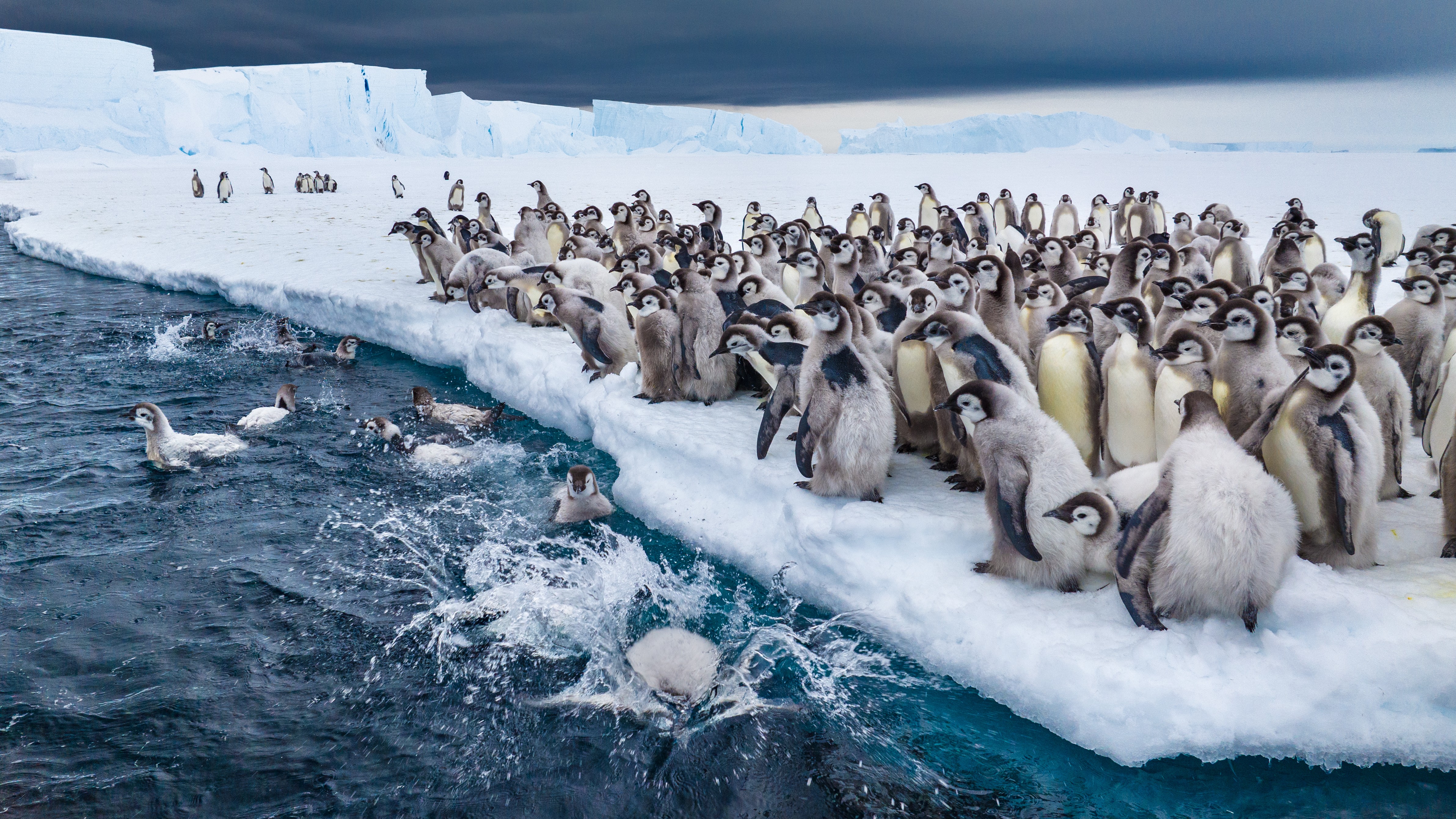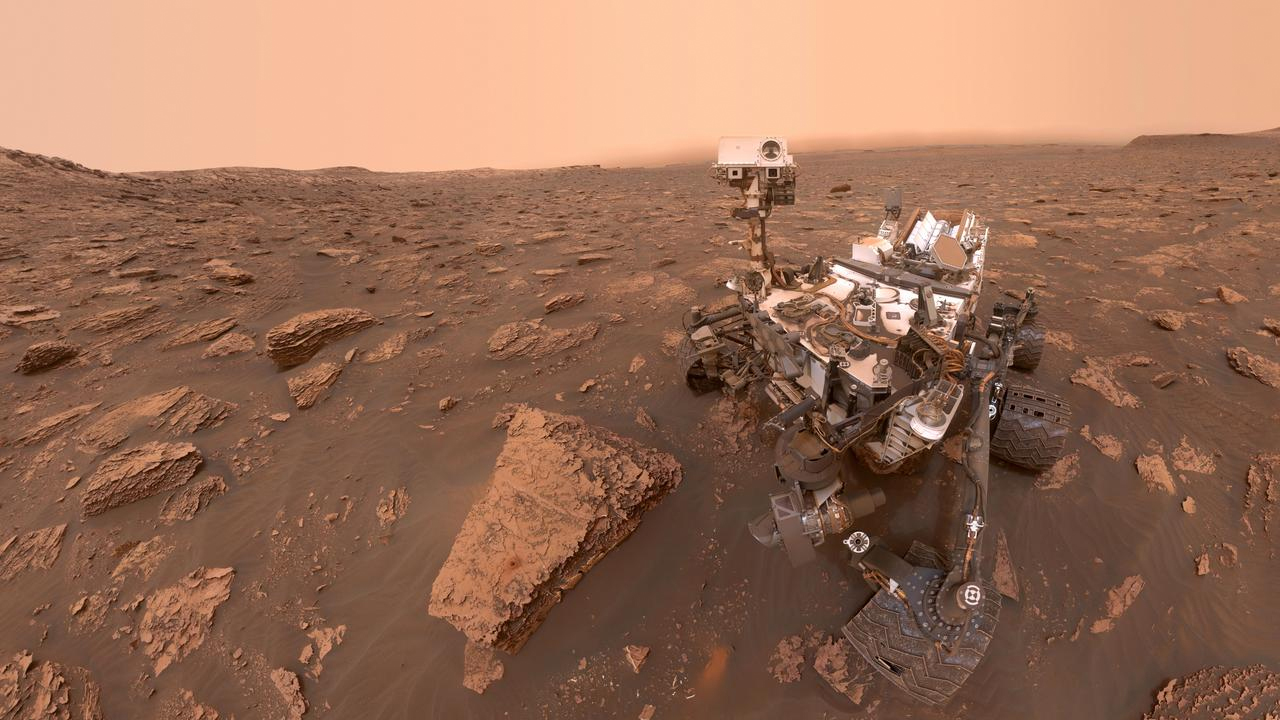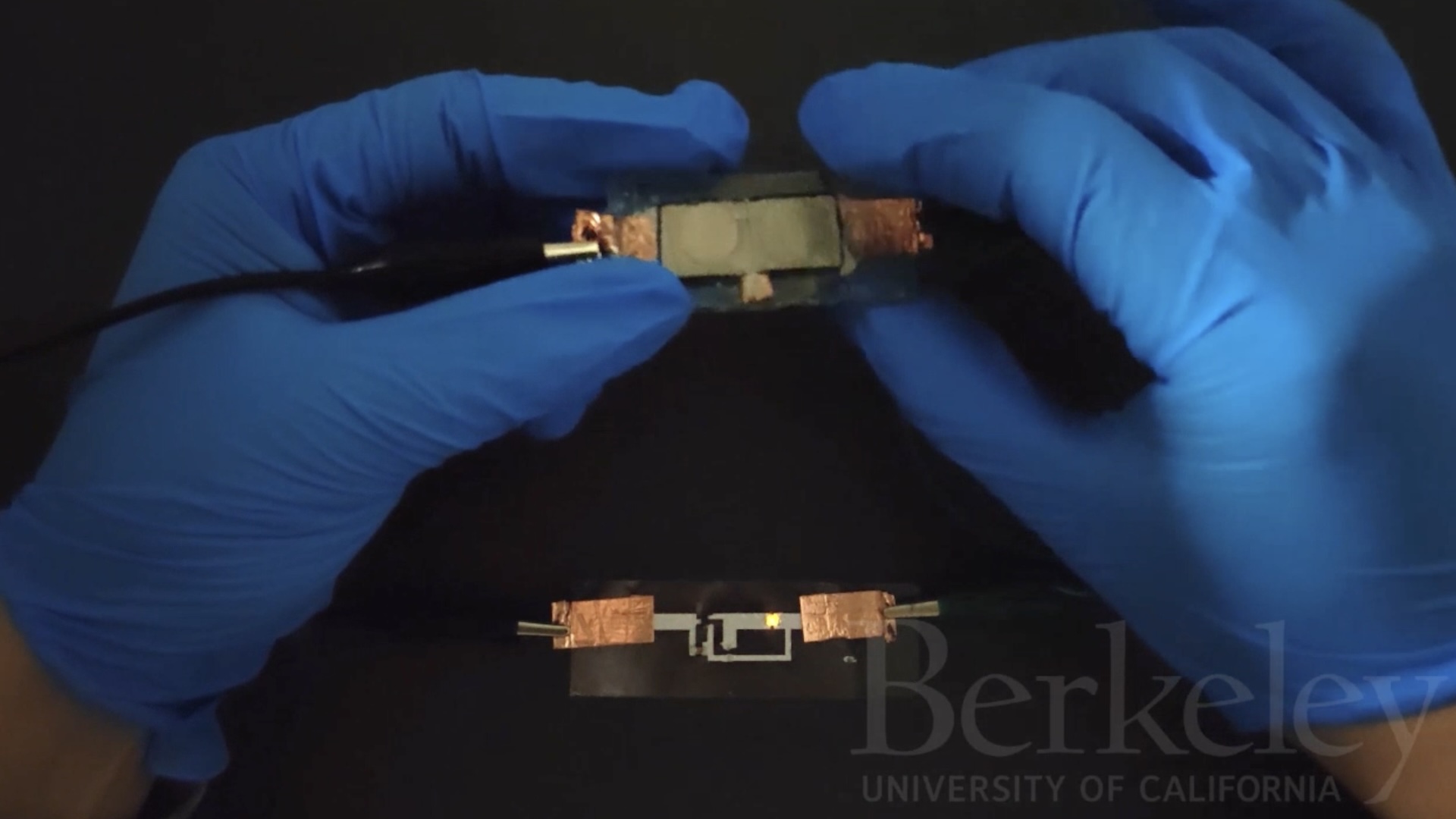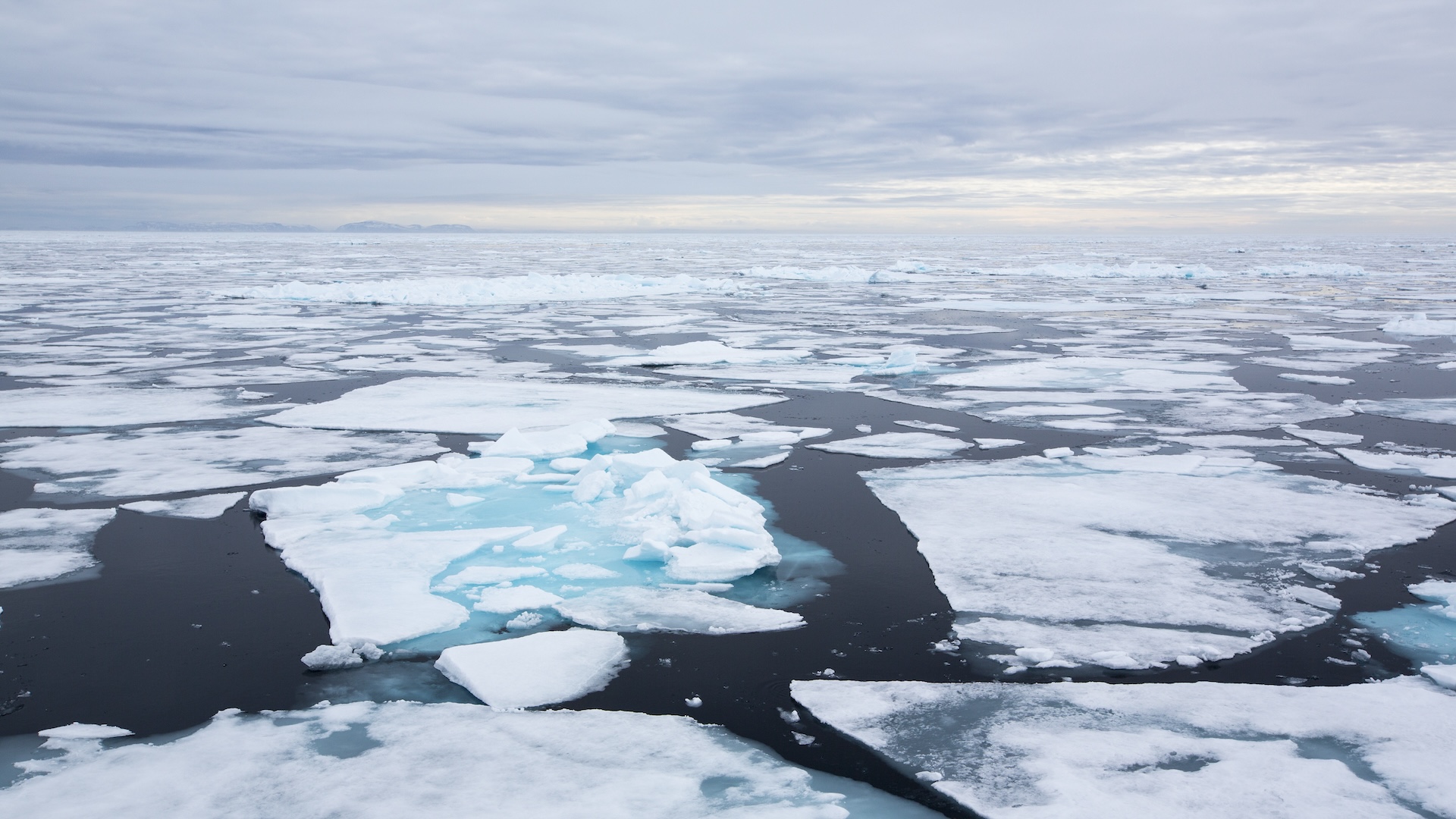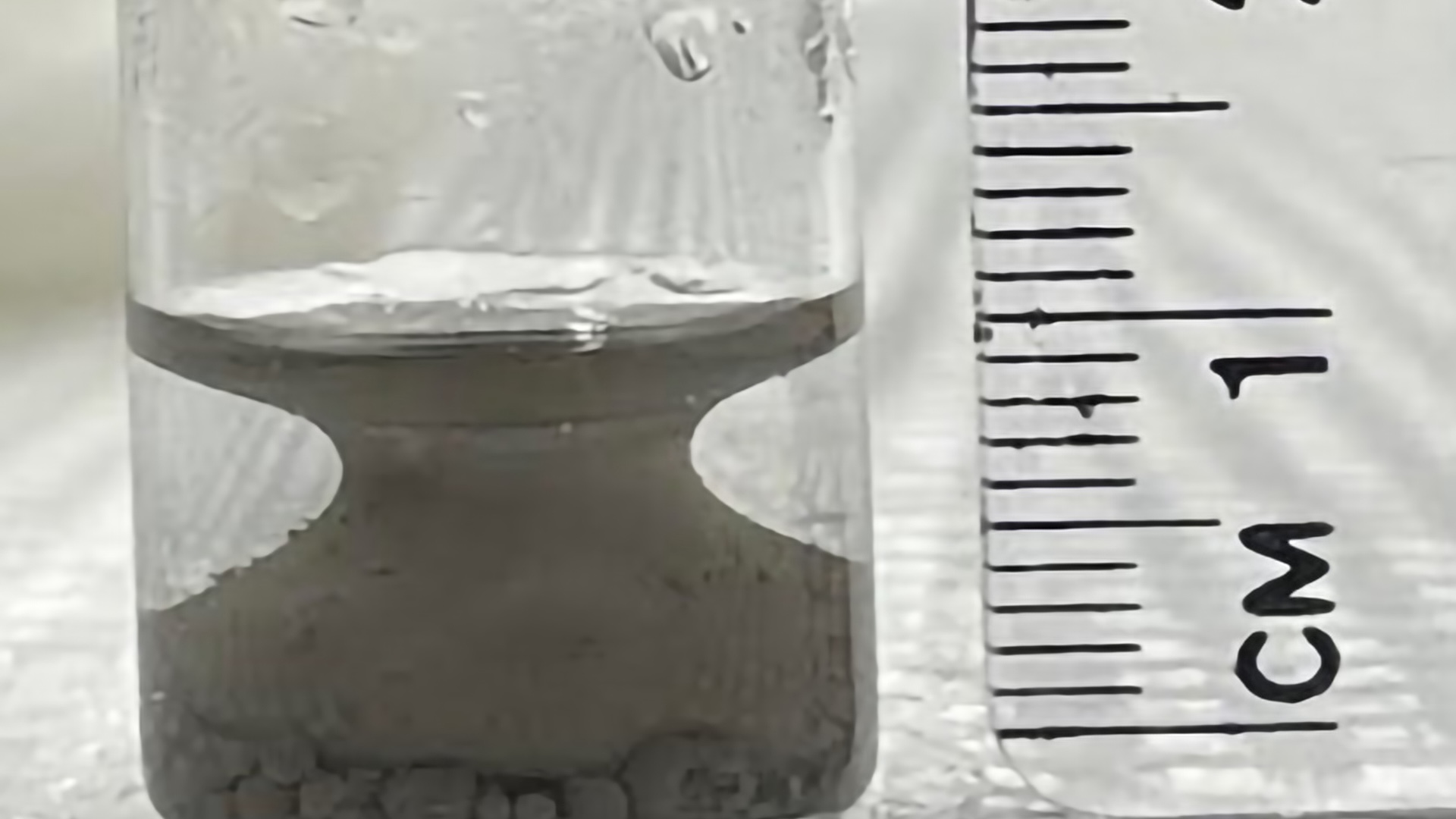Walvis Bay saltworks: The monster refinery in Namibia with colorful ponds that cover the land like patchwork
Walvis Bay in Namibia is home to the largest solar sea-salt production plant in sub-Saharan Africa. The plant is famous for its brightly colored evaporation ponds.
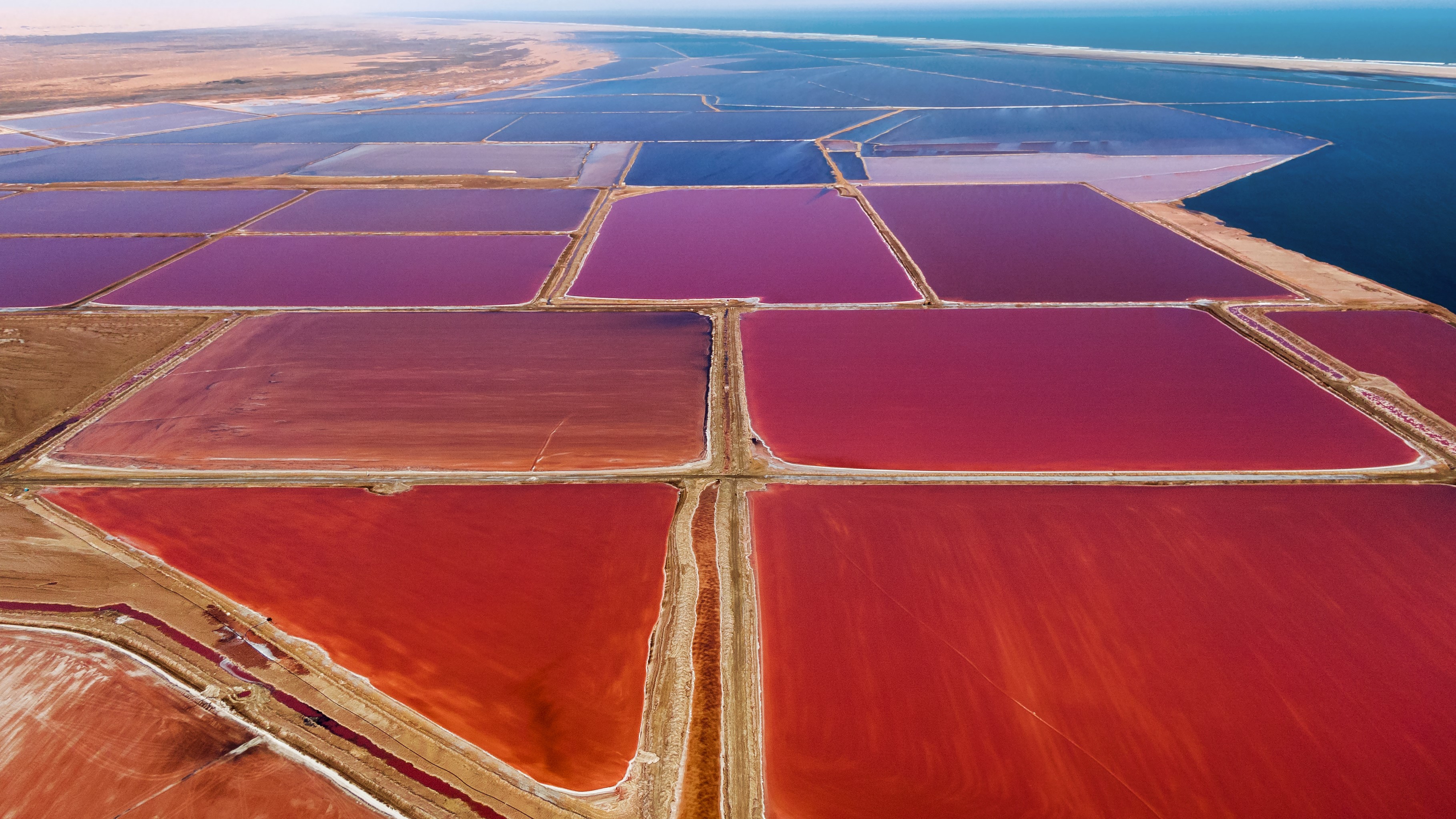
Name: Walvis Bay salt works
Location: Atlantic coast of Namibia
Coordinates: -23.026816314419552, 14.464431525720594
Why it's incredible: The salt pans look like a colorful patchwork quilt from above.
Walvis Bay is a port city on the Atlantic coast of Namibia that is home to an enormous sea salt production plant. The plant has been operating for more than 60 years thanks to the region's arid climate and coastal winds, which are ideal for evaporating seawater containing the salt.
The saltworks are located about 5 miles (8 kilometers) southwest of Walvis Bay city center. The plant covers an area of 12,350 acres (5,000 hectares), according to Walvis Bay Salt Holdings, making it roughly half as big as Disney World in Florida.
Salt production at Walvis Bay relies on Atlantic seawater that is pumped at a rate of 8,500 cubic feet (240 cubic meters) per minute into artificial ponds, according to the guided tour operator Desert, Dunes and Dust Tours. The plant is fed by the Benguela Current — a cold, northward flowing ocean current that forms the eastern limb of the South Atlantic subtropical gyre.
Evaporation via a combination of the sun's warmth and wind increases the salt content in the ponds from about 2.9% to 3.5%, which is still liveable for plankton, algae and small ocean critters. These creatures and microorganisms can turn the ponds so colorful, the plant looks like a tile mosaic from above.
Pumps transfer the brine resulting from this initial evaporation stage to concentration ponds, where the salt content rises to 25%. Another set of pumps then siphons this water into crystallization ponds that each span about 50 acres (20 hectares) in size, or about 38 football fields.
By the end of the crystallization stage, each pond contains a 4- to 6-inch-thick (10 to 15 centimeters) salt crust, which mechanical harvesters remove and dump into huge bins. A conveyor belt then takes these bins to a facility where the salt crystals are washed with a mixture of seawater and gypsum that dissolves impurities such as magnesium and potassium, while keeping the salt intact.
Sign up for the Live Science daily newsletter now
Get the world’s most fascinating discoveries delivered straight to your inbox.
After washing, the salt is dried in huge piles outside. Around 240 tons (220 metric tons) of salt are washed and dried every hour at Walvis Bay, amounting to a total annual production of more than 1.1 million tons (1 million metric tons) of salt, according to Walvis Bay Salt Holdings.
The company exports chemical-grade salt used in industries like animal feed production, water treatment and pharmaceuticals to Nigeria, Cameroon, South Africa and Europe. It also exports table salt for human consumption to several countries in Africa, including South Africa, Angola and the Democratic Republic of Congo.
Walvis Bay's saltworks are also a feeding ground for shrimp and larval fish, which in turn attracts birds. Together with the nearby Walvis Bay Lagoon and a bird sanctuary, the salt production plant provides coastal wetland habitat for birds like flamingos and pelicans, according to the website Birdingplaces.
Discover more incredible places, where we highlight the fantastic history and science behind some of the most dramatic landscapes on Earth.

Sascha is a U.K.-based staff writer at Live Science. She holds a bachelor’s degree in biology from the University of Southampton in England and a master’s degree in science communication from Imperial College London. Her work has appeared in The Guardian and the health website Zoe. Besides writing, she enjoys playing tennis, bread-making and browsing second-hand shops for hidden gems.
You must confirm your public display name before commenting
Please logout and then login again, you will then be prompted to enter your display name.

